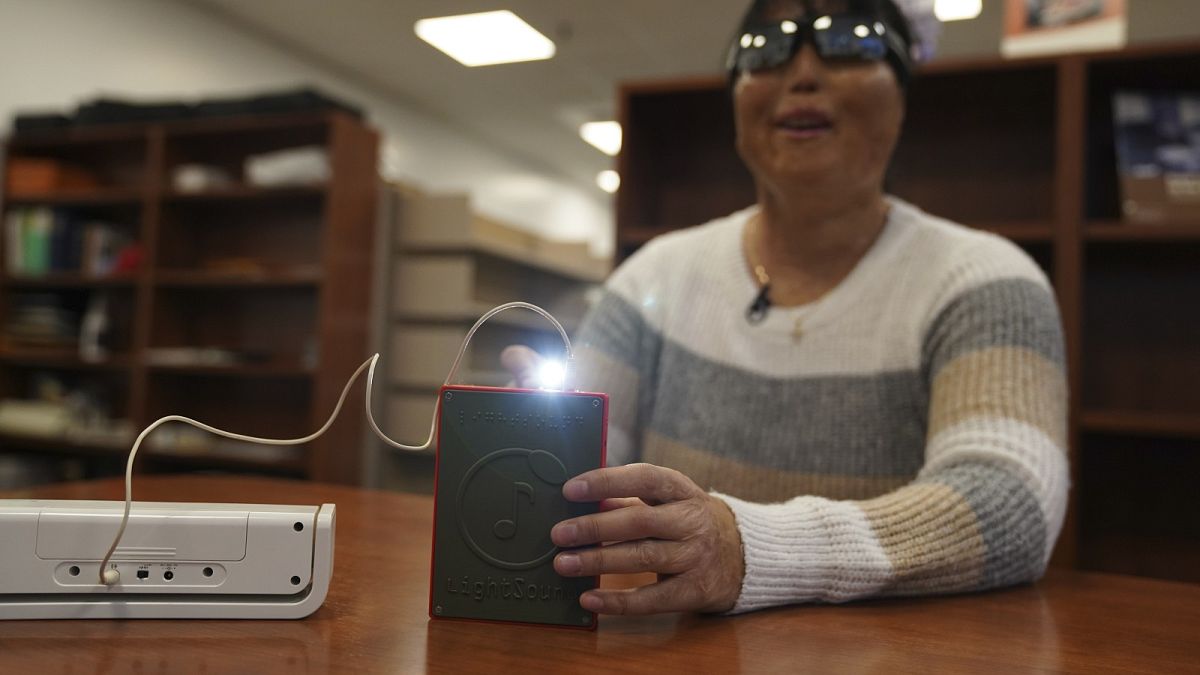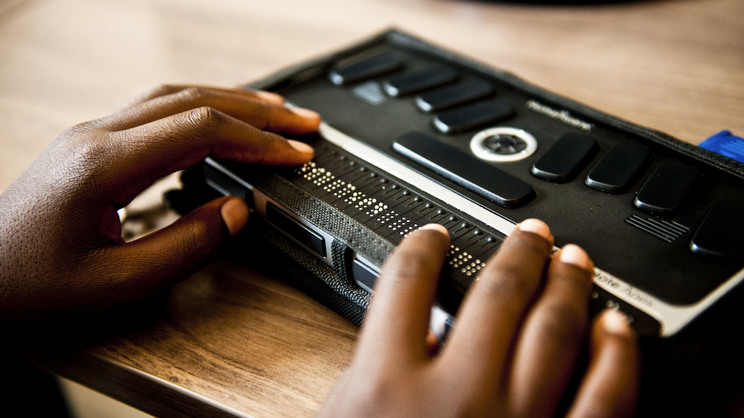Discover Innovative Devices Created for the Aesthetically Impaired
The advancement of innovative tools for the aesthetically damaged stands for a considerable development in ease of access and independence. Technologies such as smart glasses with AI capacities and mobile applications made to give acoustic descriptions are improving day-to-day experiences for individuals.
Smart Glasses for Navigation

Smart glasses created for navigating are reinventing the means aesthetically damaged people connect with their atmosphere. These innovative tools make use of a mix of cam technology, expert system, and acoustic responses to give real-time details concerning environments. By using barrier discovery systems, clever glasses can signal customers to possible dangers, making it possible for much safer wheelchair in both acquainted and unknown settings.
The integration of GPS modern technology better boosts navigating capacities, permitting customers to get auditory directions as they relocate. This hands-free strategy not just promotes independence but additionally equips visually impaired people to navigate urban landscapes with increased self-confidence. Furthermore, numerous smart glasses are outfitted with functions that determine landmarks and road indications, providing contextual details that improves the user experience.
In addition, the growth of these devices is continually progressing, with companies functioning to enhance the precision of item recognition and increase the variety of navigational features. As wise glasses become extra budget-friendly and accessible, they hold the possible to considerably change day-to-day live for aesthetically impaired customers. Ultimately, these cutting-edge devices stand for an important step toward inclusivity, offering boosted movement and a better sense of autonomy for people browsing the world around them.

Mobile Apps for Daily Living
How can mobile applications boost the day-to-day lives of visually damaged people? Mobile applications are revolutionizing the way aesthetically damaged users browse their atmospheres, handle day-to-day tasks, and access details. These applications supply important assistance with various capabilities, promoting independence and boosting high quality of life.
Numerous ingenious mobile applications are created specifically for day-to-day living. For example, applications like Be My Eyes connect aesthetically impaired individuals with sighted volunteers via video clip calls, enabling them to obtain real-time support with jobs such as checking out tags or navigating unknown rooms. Seeing AI, created by Microsoft, uses synthetic knowledge to define environments, read text, and identify items, properly changing a smartphone into a powerful tool for everyday help.
In addition, navigating apps tailored for the visually impaired, such as Aira and BlindSquare, provide audio-based directions and environmental info, making it possible for customers to traverse their environments securely and with confidence. Past navigating and prompt aid, mobile applications additionally sustain company and job monitoring, with attributes that aid customers establish suggestions, develop order of business, and track consultations. In summary, mobile applications act as indispensable resources, encouraging aesthetically damaged people to lead even more independent and satisfying lives.
Wearable Technologies for Help
Empowerment with innovation is significantly apparent in the world of wearable gadgets designed to help aesthetically impaired individuals. These innovative tools integrate perfectly into daily life, boosting navigating and supplying vital comments to users. For circumstances, clever glasses furnished with video cameras can check out and recognize faces message aloud, allowing customers to engage more with confidence in expert and social setups.
One more notable innovation is using haptic responses systems in wearable gadgets. These systems utilize resonances or other tactile signals to share info concerning the individual's setting, such as challenges or adjustments in terrain, boosting mobility and safety and security. Wearable technologies likewise consist of wristbands that link to smart devices, notifying customers to notifications with refined vibrations, hence enhancing connectivity without dependence on aesthetic cues.
As these modern technologies continue to progress, they are not just improving self-reliance for aesthetically impaired individuals yet also promoting a better feeling of inclusion in culture. By linking the gap between obstacles faced in everyday living and the possibility for freedom, wearable technologies function as essential devices in the pursuit for equality and empowerment for those with visual disabilities.
Audio Summary Devices
Audio summary devices play a vital duty in enhancing availability for aesthetically impaired individuals, supplying them with the capacity to involve with aesthetic media. Mobility aids for visually impaired users. These devices supply narrated summaries of crucial aesthetic aspects in films, television programs, and live performances, ensuring that customers can totally understand the context and emotions communicated through visuals
Sound summary can be incorporated right into numerous systems, consisting of streaming solutions, cinema screenings, and live theater. Several preferred streaming solutions now include audio summary as an accessibility attribute, permitting customers to choose it easily. In enhancement to conventional media, specialized apps also exist, providing audio summaries for art exhibits, museums, and various other cultural events.
The performance of audio description hinges on the ability of the narrators, who have to communicate visual information succinctly without diminishing the initial audio. Developments in this area are likewise leading the way for more personalized experiences, where customers can adjust the degree of detail and pacing according to their choices.
Braille Innovations and Tools
Braille technologies and gadgets have significantly changed the way aesthetically impaired people communicate with message and info. Modern innovations have led to the development of flexible devices that improve proficiency and self-reliance amongst users.
In addition, portable Braille notetakers incorporate conventional Braille input with contemporary capabilities, assisting in note-taking, organizing, and record modifying on the move. AI-powered visual aids. These portable devices typically include text-to-speech capabilities, connecting the void between Braille and auditory info
In enhancement, innovative Braille printers have arised, permitting users to produce Braille labels, papers, and educational materials effectively. This availability cultivates greater participation in specialist and instructional settings, ultimately promoting inclusivity.
Additionally, research study into wise Braille innovations proceeds to increase. Instruments that include expert system are being explored to provide real-time navigation assistance and contextual information, enhancing the user experience in diverse setups. On the whole, these innovations mirror a dedication to encouraging aesthetically damaged individuals with technology, ensuring they can easily access and involve with the globe around them.

Conclusion
The innovation of cutting-edge devices for the aesthetically impaired considerably improves independence and quality of life. These technologies not just foster better addition however also promote freedom in day-to-day tasks, eventually contributing to a more equitable and available society for aesthetically impaired individuals.
As clever glasses come to be a lot more easily accessible and cost effective, they hold the prospective to significantly change everyday life for visually damaged individuals. Mobile apps are reinventing the means visually damaged individuals browse their settings, handle daily jobs, and access details. Apps like Be My Eyes attach aesthetically damaged customers with sighted volunteers through video telephone calls, permitting them to obtain real-time help with tasks such as reviewing labels or browsing unfamiliar rooms.Additionally, navigating apps customized for the visually impaired, such as Aira and BlindSquare, supply audio-based directions and ecological information, making it possible for users to traverse their environments safely and confidently.The advancement of ingenious devices for Assistive technology for the blind the visually impaired dramatically improves freedom and quality of life.